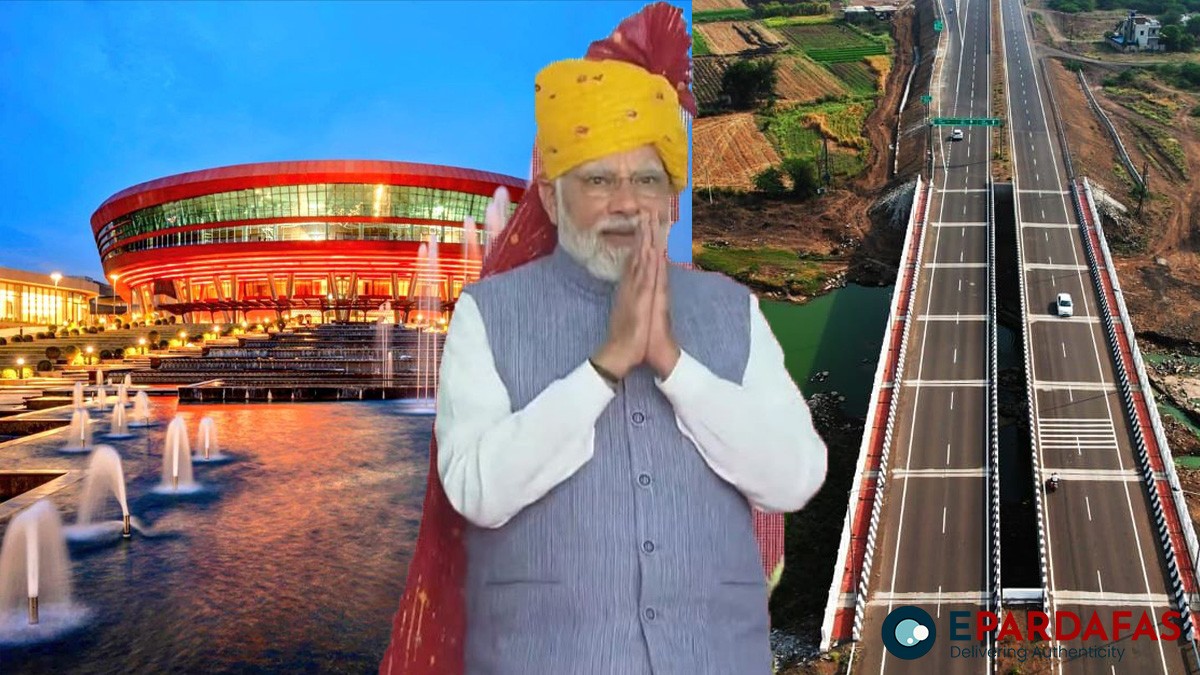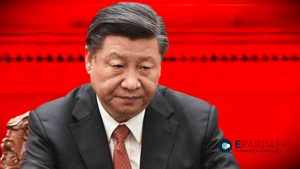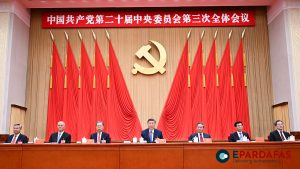
Prime Minister Modi’s Third ‘Inning’: Balancing Economic Progress, Human Development, and Hindutva Ideology
Critics and supporters alike view Indian Prime Minister Narendra Modi through a multi-faceted lens, with economic progress, human development, and Hindutva ideology at the forefront of discussions about his leadership. While some label him a Hindu extremist due to his association with the Gujarat riots, others acknowledge his role in steering the Indian economy in line with Hindutva principles. Despite the divisive opinions, it’s widely recognized that Modi possesses an aura that captivates attention.
Modi’s transformation of India is seen as a testament to his alignment with the Hindu Vedas in shaping the nation. The development across all Indian states attests to this connection. Amidst a global economic recession, international reports and statistics indicate India’s sustained advancement along the path of economic growth.
The current scenario finds the Lok Sabha of India engaged in debating a motion of confidence against the Modi-led government. Union Home Minister Amit Shah recently expressed his stance in Parliament, pointing out, “The opposition parties brought a no-confidence motion, but they could not bring the reason and the issue.” Shah highlighted the prevailing faith in the Modi-led government within Parliament and among the Indian populace, questioning the opposition’s lack of confidence.
Modi, a charismatic figure who has propelled India’s growth, announced further economic progress on a global stage. Addressing the US Parliament, he stated, “When I first came, India was ranked 10th in the world, and now it is ranked 5th. The next time I come, India will be the third-largest economy in the world.” This assertion drew applause from US senators and fueled enthusiasm among non-resident Indians for investing in India’s economic endeavors.
Modi’s ascent from 10th to 5th place within a span of 9 years underscores his leadership. His economic strategies encompass five pivotal components: the Goods and Services Tax (GST), the integrated trading system, direct benefit transfer, a special code system for insolvent companies, and the promotion of indigenous products.
Modi, who is vying for leadership for the third time, garners support from a robust cabinet including Defense Minister Rajnath Singh, Home Minister Amit Shah, Road Transport and Highways Minister Nitin Gadkari, Finance Minister Nirmala Sitharaman, External Affairs Minister Dr S Jaishankar, Commerce Minister Piyush Goyal, Women Development Minister Smriti Irani, Education Minister Dhamendra Pradhan, and numerous others, all contributing with remarkable work efficiency and demonstrable progress statistics.
Goods and Services Tax (GST)
The implementation of GST during Modi’s tenure led to a doubling of taxpayers and an increase in revenue. As of April, GST collections surged by 12%, with a monthly increment of approximately 1.87 billion. States like Gujarat witnessed a 20% spike in GST collections, reflecting positive trends.
Integrated Trading System
Modi’s emphasis on technological access extended to social welfare programs, marked by the introduction of the integrated trading system. This innovation revolutionized India’s business landscape, promoting electronic payments in rural areas. It aimed to lower transaction costs and enhanced economic services accessibility, spurring private companies to bolster technological infrastructure. The International Monetary Fund lauded India’s progress in electronic payments, underscoring its role in curbing informal transactions and potential leakages.
Direct Benefit Transfer
Modi’s direct benefit transfer policy, facilitated through Jan Dhan Aadhaar and mobile phones, streamlined financial inclusion. This mechanism curbed leakages, saved billions for the central government, and fostered efficiency in disbursing funds to beneficiaries.
Bankruptcy Code System
The introduction of a special code system for insolvent companies expedited liquidity processes and loan repayments. This policy led to the clearance of bad loans worth 2.53 billion within six months, significantly reducing the debt burden.
Promotion of Indigenous Products
Modi’s advocacy for Indian products, particularly in electronics and semiconductors, spurred the growth of semiconductor chip manufacturing companies. This strategy aimed to bolster domestic production, reduce imports, and establish India as a manufacturing hub. The accompanying improvements in transportation infrastructure facilitated economic growth, contributing to India’s rise in global shipping rankings.
Despite his accomplishments, Modi’s leadership is not without controversy. Critics question his association with the Gujarat riots and accuse him of pursuing a Hindu extremist agenda. Supporters, on the other hand, commend his economic strategies and role in advancing India’s stature on the global stage.
As Modi seeks his third term as India’s leader, his cabinet’s collective expertise and progress-oriented focus bolster his endeavors.
In a nation balancing economic development, human welfare, and ideological values, Prime Minister Modi’s leadership is a subject of ongoing debate, capturing the complexity of India’s journey towards progress.
English translation of an article published in the Nepali edition of Pardafas.














Comments